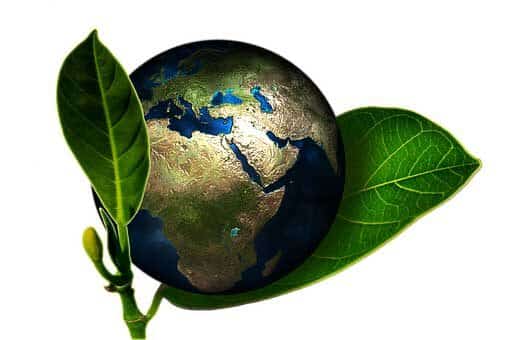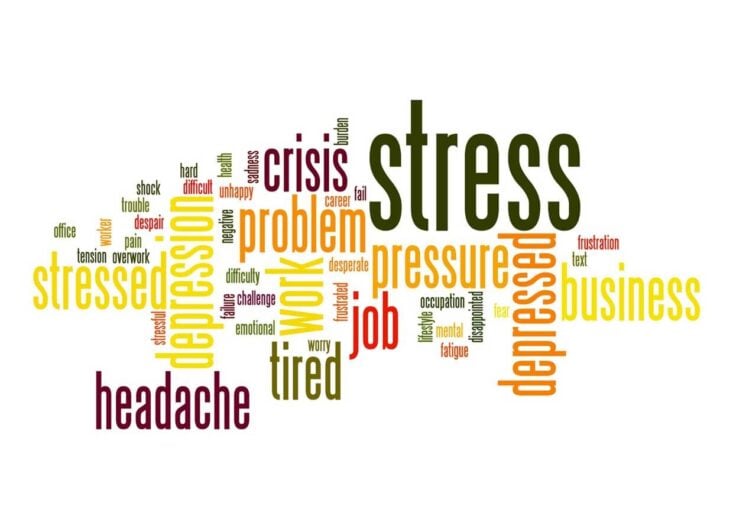Protecting the earth may seem like a daunting task. Burning fossil fuel releases carbon dioxide, which is disrupting our climate. Unwise use of water and other resources causes pollution and destroys natural habitats. Fortunately, each of us has the ability to make a difference. When multiplied by millions and billions of people, even small actions add up. Here are twelve steps you can take right now.
1. Leave the car behind and walk or ride a bike whenever you can. The carbon dioxide your car emits on a drive down to the corner store will be in the atmosphere for many years. Cars isolate you. Walking and biking keep you engaged with what’s happening right around you–people, weather, plants, animals. People who are engaged with their environment care what happens to it.
2. Too far to walk or bike? Use mass transit whenever it’s available. That includes school buses! One vehicle with many passengers is far more efficient than many vehicles with one passenger each–and at their destination, the mass transit riders don’t need to worry about parking. This saves fuel, reduces roadway congestion and air pollution, and means less open land has to be paved for parking.
3. If you must use a car, don’t let it idle for more than 30 seconds. Turn off the engine while waiting in drive-throughs, traffic jams, or highway construction zones. You will not run down your battery or wear out your starter. New cars need 10 seconds or less of warm-up time. Save fuel and reduce exhaust fumes.
4. Don’t use your car as a traveling storage locker. Basic physics tells us that it takes energy to move mass. Clean out everything that isn’t needed for a roadside emergency and watch your gas efficiency improve.
5. Consider an all-electric or plug-in electric-gas hybrid for your next vehicle. Not only do electric vehicles eliminate or drastically reduce fossil fuel use, they are cheaper to operate and maintain because they have fewer parts. Technology is improving rapidly and electric charging stations are becoming more common. If you’re not ready to make the jump to electric or hybrid vehicles, look for the smallest, most fuel-efficient gas or diesel vehicle that will meet your needs.

6. Recycle your used beverage containers or return them for deposit. Aluminum is highly recyclable. Recycling saves 95 percent of the energy needed to mine, transport, and smelt new aluminum ore. Plastic bottles, made from petroleum, can be easily recycled into many new products. One can or bottle may seem small, but Americans go through more than 80 billion of them annually, and only about 25 percent of plastic bottles are recycled. Make sure to see if you can also recycle https://www.greenandgrowing.org. Does your state have a deposit law? Those nickels add up! Better yet, invest in a reusable water bottle and save plastic and money.
7. Bring your own bags when you go shopping. Single-use plastic bags are made from non-renewable petroleum. They’re recyclable in theory but almost never are because the film gums up most recycling equipment. Paper bags are made from trees that have to be harvested and processed. Fabric or recycled plastic tote bags are inexpensive, easily obtained, washable, and can last for years.
8. Heating and cooling are the biggest home energy expense for most Americans, and oil or gas are the most common heat sources. In winter, turn down the heat to 68 degrees or lower. Indulge yourself in warm, fuzzy clothes. Open shades and blinds on the sunny side of the house to take advantage of solar gain. Close them at night and on the shady side of the house to prevent heat loss.
9. Air conditioners run on electricity, which in many places is generated from fossil fuels. For each degree above 75 you set the AC, you save 3 percent in energy. To save even more, open the windows when you can and turn on fans. Close the shades and blinds on the sunny side of the house to prevent heat gain. Open them at night to let the house cool.
10. Turn off lights in unoccupied rooms. If you must leave a light on for safety, use a low-wattage energy efficient light. Exterior lights count! Once everyone is home for the evening, turn off the porch, garage, and back yard lights. If people are coming and going at odd hours, install a motion sensor to turn lights on and off automatically. Light pollution wastes electricity, can harm animals and plants, and washes out our view of the night sky.
11. Unplug electronics when not in use, or put them on power strips and turn the strips off. Computers, TVs, sound systems, and some kitchen appliances draw current even when they aren’t on. This “vampire energy” can add significantly to your house’s power consumption–and you and the environment pay for it.
12. Get a quote on clean, renewable energy–solar, wind, biomass, low-impact hydro. The cost of residential solar installations has dropped sharply in the last few years. Can’t put solar panels on your house? There may be a community solar project in your area, which allows a number of residents to buy into an off-site solar installation. Some utility companies allow customers to purchase renewable energy through their utility bills. The extra cost per kilowatt hour is usually small, and it takes only a few minutes to set up an account.
Guest Post by Craig – Green and Growing https://www.greenandgrowing.org















